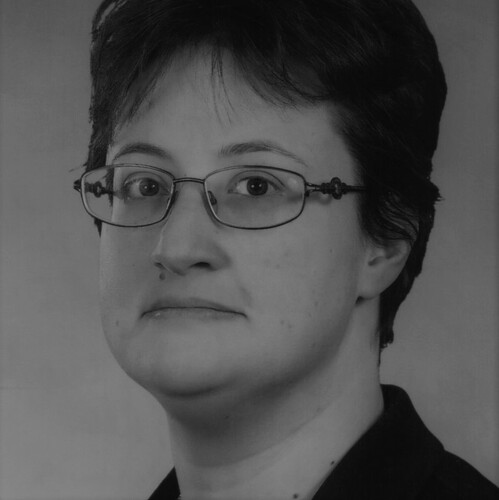Chair
Maya J. Lo Bello
From Marginalia to Bookends: Industrialization, Capitalism and Advertising in Hungary’s High Modern Journal Nyugat (›West‹)
Abstract
Within the history of modern Hungarian literature, the journal Nyugat was the flagship of modernist literary movements from 1908 to 1941. Mainly perceived as a periodical dedicated to preserving its own l’art pour l’art brand of aestheticism during the period before World War I, my analysis examines Nyugat’s ties to the industrial lobby group, the Hungarian National Industrialists’ Association [GyOSz], through the connections of one of its editors, Miksa Fenyő (1877-1972). First the secretary, then the managing director of GyOSz, Fenyő’s connection to Hungary’s economic elite has largely remained unexplored in Hungarian literary history. By examining the advertisements and notices found in Nyugat, the GyOSz-issued periodical also edited by Fenyő, Magyar Gyáripar [Hungarian Factory Industry], and a few other prominent periodicals from the period, I interpret these textual traces as a type of marginalia that appear inconsequential, yet still allow a periodical to shift, alter and change its profile quickly enough to adapt to the tumultuous historical and socio-economic pressures that characterized the last two decades of the Austro-Hungarian Empire. By reimagining this form of marginalia as a »bookend« that subsequently positions a periodical within a socio-economic context, I draw upon Anthony Giddens’ theory of disembeddedness, Raymond Williams’ concept of cultural formations and Jerrold Spiegel’s description of a network of means to demonstrate how Nyugat’s editors maintained a fine balance between capitalism and high culture in order to attain artistic autonomy.

Maya J. Lo Bello
Dr. Maya J. Lo Bello is Adjunct Professor at ELTE TÓK’s Department of Foreign Languages and Literature.
Thursday, 17th June 2021 at 15.15 CEST (UTC+2)
Marcus Krause
Riding the Flow of Luxury: The Aesthetics and Politics of Style in Literary and Visual Images of the Sport im Bild (1921-1932)
Abstract
On a thematic level, my presentation will retrace what images of a better living and of the high society are projected by the texts and pictures in the Sport im Bild and how these images are related to modernist ideas of acceleration and of the exploitation of new areas of experience. On the level of media theory, I will describe, firstly, the aesthetic regimes specific to the various formats of the journal (the paintings, the stories and novels, the advertisements, the reports, the drawings, the photographs) and, secondly, how these formats are intertwined to create a visual experience that is typical for the brand Sport im Bild. Finally, I will hint at the pictorial policy underlying this ›flow of luxury‹ and I will ask which elements of the magazine produce or intensify the desires typical for the ideology of ›aesthetic capitalism‹ and which elements provide a critical stance towards it.
Download a script of this paper here.

Marcus Krause
Marcus Krause is a Post-Doc in the DFG research unit »Journalliteratur« (in subproject 1 ›Ornamental Constellations: On the Aesthetics of Literary Magazines in the Realm of Modern Mass Media (1880 to 1930)‹)
Thursday, 17th June 2021 at 15.15 CEST (UTC+2)
Gábor Dobó
Capitalism and Radical Imagination in Avant-garde Periodicals
Abstract
According to Peter Bürger’s widely cited Theory of the Avant-garde, radical modernist movements had an urge for subverting the bourgeois institutions of cultural production. However, many post-WWI avant-garde editors were eager to forge alliance with various sectors of the economy, rather than opposing them. Dozens of publications can be quoted investigating the potential synergies deriving from the merge of avant-garde art and various phenomena of interwar capitalism. Surprisingly enough, these left-wing authors, while criticizing the capitalist system of organizing production, also found some of the distinguishing characteristics of capitalist economic order inspirational. 1920s avant-garde journals were overflowing with articles exploring the perspectives opened up by Fordism, Taylorism, standardization, rationalization, and »scientific management« in general.
Employing the methodological toolkit of periodical studies, I will deal with the perception of capitalism in 1920s avant-garde periodicals, predominantly from the Central and Eastern European scene, rather than the already well-known Western Functionalisms. I will examine the following: What kind of political economy was envisioned in these magazines? How were they related to the aesthetic practices and theories of their editors, to their own role in the actual cultural ecosystem, and to the position of their journals in the periodical press market?
My hypothesis is that, for a brief span of time after WWI, the driving ambition of avant-garde periodicals was to rewrite the sign system of modernity. Employing a sort of radical imagination, instead of merely opposing it, they de- and reconstructed capitalism in order to create their utopian social visions. I will also investigate the far-reaching polarizing effects of this intellectual undertaking on the avant-garde scene itself. By the time of the Great Depression, we find part of these one-time avant-garde editors in illegal anti-establishment movements, and the other part of them designing modernist villas in the suburbs of Budapest, Bratislava or Brno.
This video was removed in compliance with the author’s preferences.

Gábor Dobó
Gábor Dobó is a PhD literary historian. He studied at universities in Budapest, Florence and Angers. He has been working at the Kassák Museum (Budapest) since 2014 as a member of the project »Lajos Kassák’s Avant-Garde Journals from an Interdisciplinary Perspective (1915–1928)«
Thursday, 17th June 2021 at 15.15 CEST (UTC+2)
Discussion
You are invited to discuss the papers in this section in advance of the live Q&A Session using the comment function below. Please make sure to indicate which paper you wish to comment on.


Thank you for this fascinating talk Maya, it was great to learn more about the financing and patronage behind Nyugat. I’m afraid I probably won’t make the discussion on Thursday as I will be travelling, so I thought it best to ask my question here. I came across Nyugat when exploring the relationship of psychoanalytic writing to modernist journals, discovering that Freud published first in Nyugat in 1917 (issue 10:1) an important essay where he outlined the ‘three revolutions’ (Copernican, Darwinian… and Freudian). I also learnt that Sandor Ferenczi, a member of Freud’s inner circle, was very friendly with Ignotus, who published a number of Ferenczi’s pieces in Nyugat. I wonder if you could shed any further light on the presence of psychoanalysis in the pages of the journal?
Thank you for your very interesting question. Although I am not a specialist on the history of psychoanalysis, Nyugat authors and the editor, Ignotus, were most definitely aware of Freud. The author, physician and psychoanalyst, Géza Csáth, was not only one of Ferenczi’s students, but also a follower of Freud. His short stories written before World War I were heavily influenced by Freud as well. Nyugat intellectuals, however, were not as extreme as the avantgarde, yet were not within the “fold” of mainsteram Hungarian society. My understanding is that mainstream Hungarian society was appalled by Freud and considered his interpretation of sexual fantasies, dreams, etc. as particularly unacceptable. I don’t think these particular studies are available in English, but the psychologist and historian, Ferenc Erős, has written quite a few excellent analyses about Freudism’s entrance into Hungary and naturally Ferencz’s role in this as well.
Hello Marcus, thank you for the highly interesting presentation. I would have a question for tomorrow’s live Q&A session about the audience of Sport im Bild. You suggest that its target audience (according to the advertisements etc.) and its Iserian “implied readers” (according to its editorials, articles etc.) was the upper classes. I am wondering whether you could develop more on the actual readership of the magazine. Did you find historical, archival evidence about its actual readership? Is it possible that the “desire structure” and “aesthetic capitalism” represented in the journal was a “simulacrum” targeting actually the lower classes and not (only) the bourgeoisie? According to Adorno and Horkheimer the function of cultural industry, among other things, is to form and create the desires and imagination of subaltern classes. Could it be the case of Sport im Bild as well representing the imagined life of the upper classes in order to indoctrinate the lower ones?
Thank you, for your comment, Gabor! You’re asking a very important question, which is at the same time very difficult to answer. But I’ll try to come up with an answer tomorrow 🙂
Marcus, I think you made a very convincing suggestion to this question in your paper already: You mentioned the exclusive “illustrated property advertisements” in the newspaper that were obviously adressed to a rich readership! But of course it would be very interesting to know more about the readership of the magazine. Gabor’s hint to Adorno/Horkheimer is fruitful here! Probably the magazine adresses the “Angestellten” as readers/ consumers?
Thanks to all the three of you for very interesting papers!
Thank you Maya for this nuanced analysis. My question for tomorrow’s live Q&A session is the following: To what extent do you consider to be typical Fenyő’s and Hatvany’s practice creating a “network of means” through (commercial) marginalia in high Modernist journals? Either in Hungary or internationally. And a comment: I completely agree with your observation that advertisements are essential characteristics of Modernist journals. And it’s a pity and telling in many ways that advertisements are often cut from the surviving copies of these periodicals.
Thank you, Gábor for a very pertinent and thought-provoking question. As far as comparing whether other journals employed a network of means is concerned, I think it is essential to weigh the influence of a journal’s geographic and historical context. In the West, capitalism and capitalist patronage systems were relatively well-developed, just as advertising was. Virginia Woolf could set up Hogarth Press in her parlor and act as a promulgator of Modernist literature while simultaneously writing her own works. The well-known example of Gertrude Stein as patron, a consumer who “goes shopping” among art exhibits and author also comes to mind, or the art scene Flaubert describes in L’Éducation sentimentale. Hungary’s case is similar in some ways, but was still struggling with capitalism, industrialization and the development of a social class that would consume both industrial and Modernist products. On the one hand, I think advertisements always say quite a lot about any periodical’s financial, ethical or political profile, to mention just a few issues. On the other hand, I would also argue that Nyugat was particularly sophisticated in connecting a periodical formation to aen economic/industrial formation that allowed the journal to rely upon a fairly varied “portfolio,” thereby ensuring some degree of artistic autonomy.
Thank you, Gábor, for a fascinating comparison of synthetic journals and their stance on capitalism. While the lovely collection of images provide excellent examples of the varied topics and media that appeared in synthetic journals, I am wondering whether synthetic journals genuinely displayed a higher rate of plurality compared to other periodicals, or were they better at representing this sense of combining media in photos and illustrations? Do the articles also display a similar plurality of viewpoints or perspectives?
Great question, Maya, thank you. It will be a pleasure to discuss it during the Q&A session. See you soon!
Congratulations, Marcus, on a very comprehensive analysis of Sport im Bild’s evolution into a journal for luxury goods and the upper classes. I found your discussion of a journal’s staging value to be inspiring. As regards the shift that the journal took in the 1900s (per the example of the 1919 issue you showed), is there any correspondence between editors or editors and contributors that explains why the journal moved away from sports? Was it a conscious decision to attract a different readship, a decision fueled by market pressures or an organic reflection of how the role of sport and leisure time changed in society?
Thank you, Fabio, for being a wonderful host. And thank you, Gabor and Maya, for the discussion and your great presentations. I’m sorry I didn’t get to ask the questions I had for you. Hopefully, we can discuss them another time!